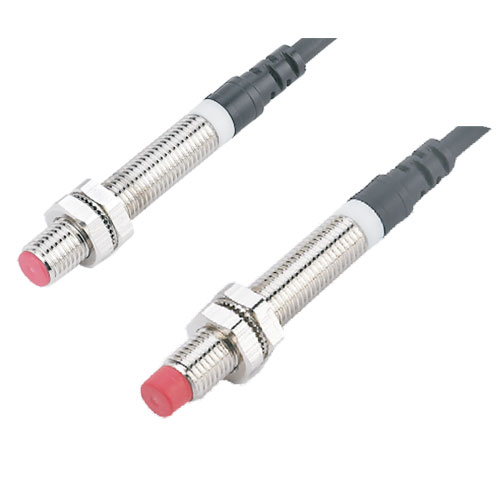What is a photoelectric sensor?
There are two types of photoelectric sensors: NPN output type (current flow) and PNP output type (current flow). When the current flow sensor (PNP output type) is switched on, the current flows from the power supply through the output of the sensor to the load, into the load, and then to the ground.
When a sensor with current flow (NPN output type) is switched on, the current flows from the power supply through the load to the output of the sensor (output), then to the ground (GND) and finally to the system ground (GND).
Three wire proximity switch pnp, npn difference
PNP and NPN type sensors generally have three lead lines, namely the power line VCC, GND, OUT signal output line
1.NPN type
NPN means that when there is a signal trigger, the signal output line OUT and GND are connected, which is equivalent to OUT output low level.
2.PNP class
PNP is when there is a signal trigger, the signal output line OUT and VCC connected, equivalent to OUT output high power line.
Can be measured with a multimeter with power supply, the method is as follows: in VCC, GND end connected to the power supply, I plant three-wire system proximity switch power supply for DC12-36V, with a metal block type of thing on the proximity switch measurement end, its indicator lights up, with a multimeter DC voltage file to measure the voltage between OUT and GND (red pen connected to OUT, black pen connected to GND), if there is voltage, that OUT If there is a voltage, it means that OUT outputs a high potential and is a PNP type, if there is no voltage, it means that OUT outputs a low potential and is an NPN type.

Pnp and npn sensor output state difference
PNP and NPN type sensors are in fact using the saturation and cut-off of the triode, the output of two different states, belong to the switch type sensors. However, the output signals of the two are diametrically opposed, i.e. high and low levels.
The PNP output is a low level 0 and the NPN output is a high level 1.
Types of pnp and npn sensors (switching type)
PNP and NPN type sensors (switching type) are divided into six categories:
- NPN-NO (normally open type)
- NPN-NC (normally closed type)
- NPN-NC+NO (normally open, normally closed type)
- PNP-NO (normally open type)
- PNP-NC (normally closed type)
- PNP-NC+NO (normally open, normally closed type)
NPN-NC type, when there is no signal trigger, OUT and VCC power line voltage is the same, output high level VCC; when there is a signal trigger, the output line is suspended, i.e. VCC power line and OUT line are disconnected.
NPN-NC+NO type, in fact, is an extra output line OUT, the user can choose according to the need.
PNP-NO type, when there is no signal trigger, the output line is suspended, that is, the 0V line and the OUT line are disconnected. When there is a signal trigger, the OUT line and the 0V line are connected with the same voltage, outputting a low level OV.
PNP-NC type, the opposite characteristic of PNP-NO type.
PNP-NC+NO type, similar to NPN-NC+NO type, has an extra output line OUT, i.e. two output lines with inverted signals.
PNP is rarely used.











